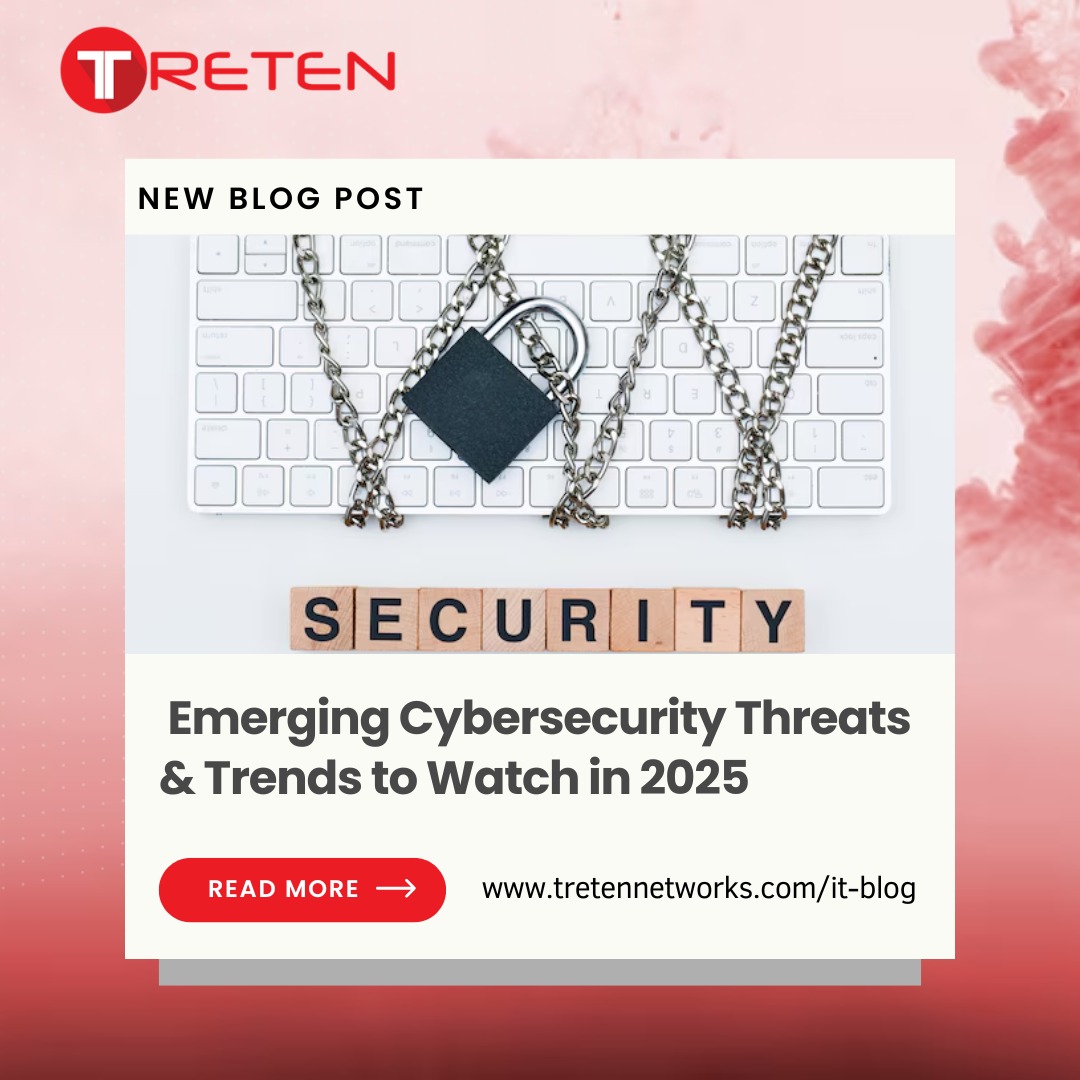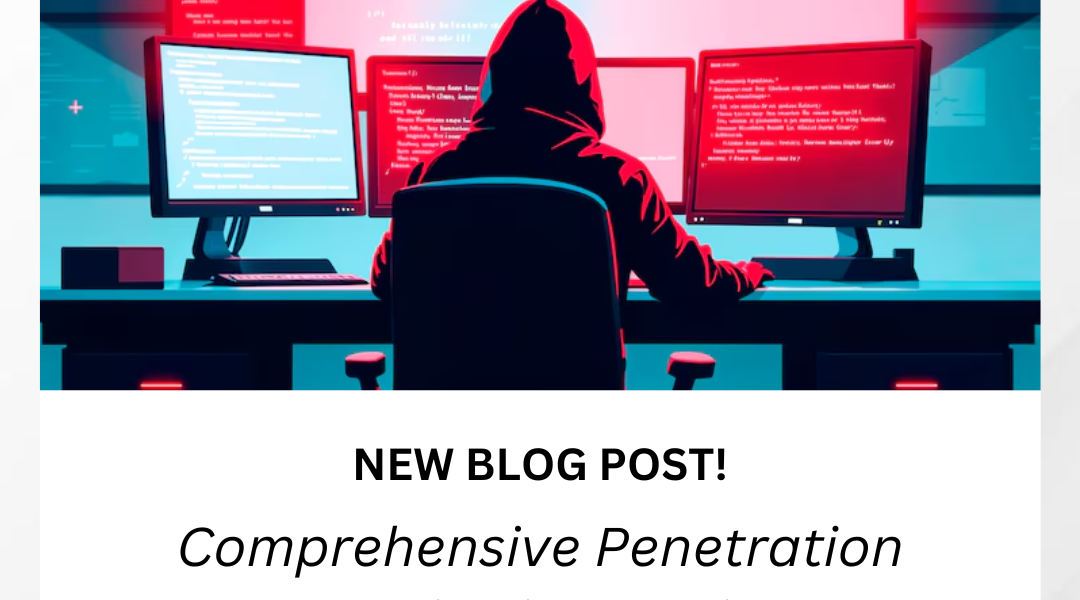Emerging Cybersecurity Threats & Trends in 2025: A Deep Dive with Cisco, Palo Alto Networks, and NetScout
The digital landscape continues to evolve rapidly, presenting both immense opportunities and significant security challenges. As we approach 2025, the threat landscape is becoming increasingly complex, with cybercriminals leveraging advanced techniques to target critical infrastructure, businesses, and individuals. In this blog post, we’ll explore the key cybersecurity trends and threats to watch, and how industry leaders like Cisco, Palo Alto Networks, and NetScout are addressing these challenges.
1. Artificial Intelligence (AI) and Machine Learning (ML): A Double-Edged Sword
AI and ML have revolutionized numerous industries, but they also pose significant risks to cybersecurity. Cybercriminals are leveraging these technologies to automate attacks, enhance social engineering techniques, and develop more evasive malware.
AI-Powered Phishing Attacks: AI can be used to create highly personalized phishing emails, making them more convincing and difficult to detect.
Autonomous Attacks: Malicious AI agents can autonomously identify vulnerabilities, exploit them, and spread laterally across networks.
Deepfakes and Social Engineering: AI-generated deepfakes can be used to deceive individuals and organizations, leading to data breaches and financial loss.
Case Study: Cisco’s AI-Powered Security
In a recent incident, a large financial institution was targeted by a sophisticated phishing attack. The attackers used AI-generated deepfakes to impersonate key executives, tricking employees into revealing sensitive information. Cisco’s AI-powered security solutions, including Cisco SecureX, were able to detect the anomalous behavior and prevent a major data breach. By leveraging machine learning algorithms, Cisco’s solutions can identify patterns in network traffic and user behavior, enabling early detection of threats.
2. The Rise of IoT and Its Security Implications
The Internet of Things (IoT) has connected billions of devices, from smart homes to industrial systems. However, many IoT devices lack robust security measures, making them easy targets for hackers.
- Botnet Attacks: IoT devices can be compromised and turned into botnets, which can be used to launch large-scale DDoS attacks.
- Data Breaches: IoT devices often collect sensitive personal data, which can be stolen and misused.
- Physical Security Risks: Hackers can exploit vulnerabilities in IoT devices to physically compromise systems, such as controlling industrial machinery.
Case Study: Palo Alto Networks Securing IoT Devices
A manufacturing company experienced a significant disruption to its production line when a group of hackers exploited vulnerabilities in their IoT devices. The hackers were able to remotely control industrial machinery, causing widespread damage. Palo Alto Networks’ IoT Security solution, combined with their Next-Generation Firewalls, was able to identify and mitigate the threat, preventing further damage and restoring operations. By providing comprehensive protection for IoT devices, Palo Alto Networks helps organizations secure their connected environments.
3. Ransomware: A Persistent Threat
Ransomware attacks remain a significant threat, with cybercriminals demanding increasingly higher ransom payments.
- Ransomware-as-a-Service (RaaS): Cybercriminals are offering ransomware-as-a-service kits, making it easier for less-skilled attackers to launch ransomware attacks.
- Extortion Ransomware: Attackers may threaten to leak stolen data if ransom demands are not met, even if they don’t encrypt the data.
- Double Extortion: Attackers may encrypt data and simultaneously steal sensitive information, demanding separate ransom payments for decryption and data deletion.
Case Study: NetScout Detecting Ransomware Attacks
A healthcare provider was recently hit by a ransomware attack that encrypted critical patient records. The attack caused significant disruption to patient care and financial losses. NetScout’s Omnis Cyber Intelligence platform was able to detect the unusual network traffic patterns associated with the ransomware attack, enabling the healthcare provider to quickly isolate the infected systems and prevent further spread. By providing advanced threat detection and response capabilities, NetScout helps organizations protect their critical infrastructure.
4. Cloud Security Challenges
As organizations increasingly adopt cloud computing, cloud security becomes a critical concern.
- Misconfigurations: Improperly configured cloud services can expose sensitive data and applications to attacks.
- Data Breaches: Cloud providers may experience data breaches, impacting their customers.
- Supply Chain Attacks: Third-party cloud service providers may be compromised, leading to widespread attacks.
Case Study: Cisco Securing Cloud Environments
A large retail company experienced a data breach when a third-party cloud service provider was compromised. Sensitive customer data was exposed, leading to significant reputational damage and financial losses. Cisco’s cloud security solutions, including Cloudlock and Umbrella, were able to identify and mitigate the threat, protecting the company’s cloud environment. By providing comprehensive cloud security solutions, Cisco helps organizations secure their data and applications in the cloud.
5. Geopolitical Cyber Warfare
Nation-state actors continue to engage in cyber warfare, targeting critical infrastructure, government agencies, and businesses.
- Advanced Persistent Threats (APTs): State-sponsored hackers use sophisticated techniques to infiltrate networks and steal sensitive information.
- Destructive Attacks: Cyberattacks can disrupt essential services, such as power grids and healthcare systems.
- Espionage: Cyberespionage is used to steal intellectual property and trade secrets.
Case Study: Palo Alto Networks Defending Against Nation-State Attacks
A government agency was recently targeted by a sophisticated nation-state attack. The attackers used advanced techniques to bypass traditional security measures and gain unauthorized access to sensitive systems. Palo Alto Networks’ Next-Generation Firewalls and Threat Prevention platforms, combined with their WildFire cloud-based threat analysis service, were able to detect and block the attack, preventing a major security breach. By providing advanced threat detection and prevention capabilities, Palo Alto Networks helps organizations defend against nation-state attacks.
Mitigating Cybersecurity Risks
To combat these emerging threats, organizations must adopt a proactive and layered security approach:
- Strong Cybersecurity Posture: Implement robust security controls, such as firewalls, intrusion detection systems, and encryption.
- Employee Training and Awareness: Educate employees about cybersecurity best practices, including phishing prevention and password hygiene.
- Incident Response Planning: Develop a comprehensive incident response plan to minimize the impact of cyberattacks.
- Regular Security Assessments: Conduct regular security assessments to identify and address vulnerabilities.
- Collaboration and Information Sharing: Collaborate with other organizations and security experts to share threat intelligence and best practices.
By staying informed about the latest cybersecurity trends and taking proactive measures, organizations can significantly reduce their risk of cyberattacks. As the threat landscape continues to evolve, vigilance and adaptability are essential to safeguarding our digital future.


